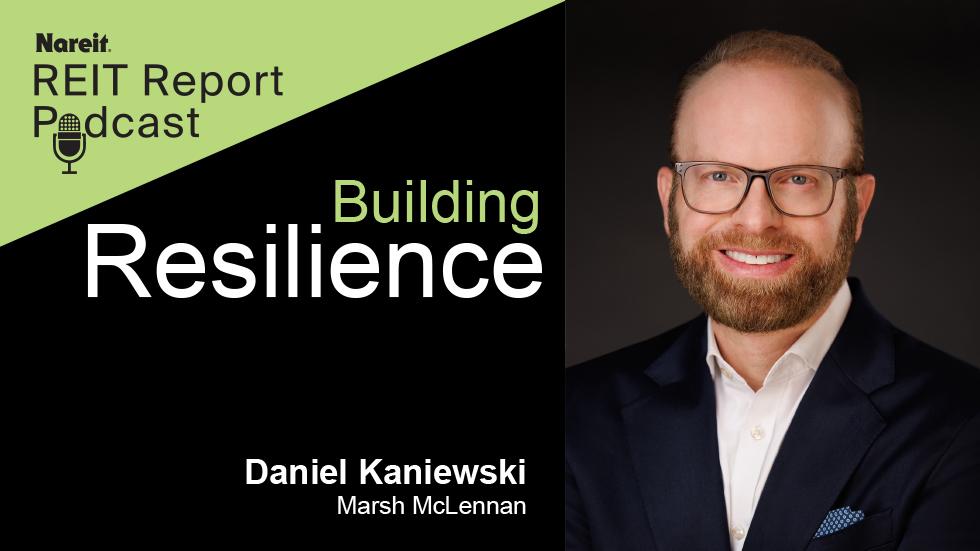
In this special episode of the REIT Report, part of an ongoing series, “Building Resilience,” covering issues facing the REIT industry as it remains focused on investing for the long term, Daniel Kaniewski, Managing Director, Public Sector at Marsh McLennan, joins Nareit’s Jessica Long, Senior Vice President of Environmental Stewardship and Sustainability, to discuss how his experience as the Federal Emergency Management Agency’s (FEMA) first deputy administrator for resilience has led to his current focus advancing resilience investment in the private sector.
“During Hurricane Katrina, I was at the White House and saw the mass devastation, and I said, shouldn't we be doing something ahead of time to reduce these disaster losses Americans will almost inevitably face. What I found was there was a small but growing interest in an area called disaster resilience.”
Currently, Kaniewski chairs the finance, insurance, and real estate committee at the National Institute of Building Sciences (NIBS), a congressionally chartered nonprofit. He shares how he first got to know NIBS through their 2005 Natural Hazard Mitigation Saves study, which showed that every dollar the federal government invested in hazard mitigation saved four dollars. Then in 2017, “on the heels of hurricanes Harvey, Irma, and Maria,” Kaniewski asked NIBS for the bottom line of a forthcoming updated Mitigation Saves study. “They shared that savings were actually, six to one. The updated report found that others benefited from these mitigation investments beyond the federal government. Communities that can continue to function after a disaster will save money, not just to the homeowner or the federal government, but to everyone in that community who would otherwise have to take the time to help those with the losses. Recovery costs were greatly reduced by those hazard mitigation investments.”
The NIBS committee he chairs published Resilience Incentivization Roadmap 2.0 , which sought to answer the question of how to incentivize stakeholders to invest in resilience so that no individual or stakeholder bears the full cost of a resilience measure. The report’s term-of-art “co-beneficiaries” refers to the array of beneficiaries of a resilience investment.
“If the homeowner invests, then the government benefits because they won't have to expend emergency response resources to help, but it goes much deeper than just response assets. We identified a whole ecosystem of co-beneficiaries. Everything from the real estate to the insurance industry.” He shares, “in the finance industry, the lender will benefit because there's less likely to be delinquencies or bankruptcies associated with those businesses or home losses.”
He goes on to share some of the findings in the report on the proven payback of resilience and recommendations for co-beneficiaries to drive further investment in resilience. “Because if each of those stakeholders, each of those co-beneficiaries, puts in a little, pretty soon it'll have a dividend for all and potentially pay for that mitigation measure.”